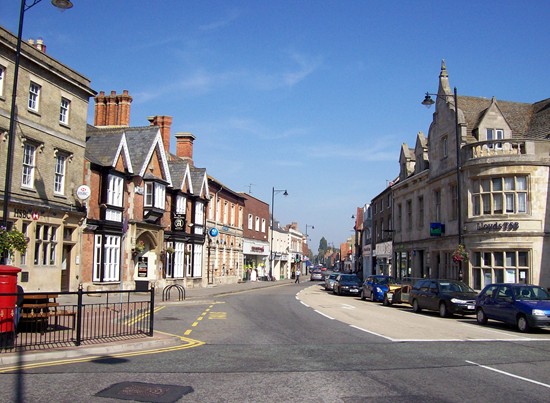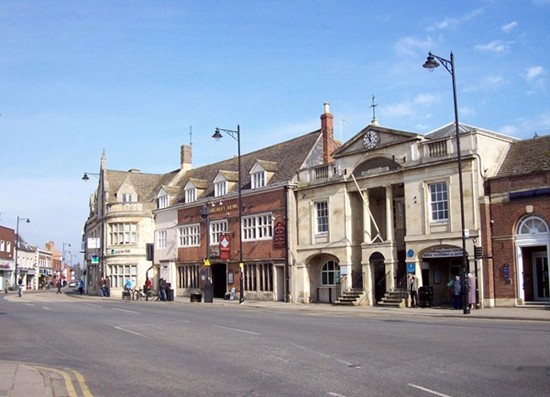|
- The market town of Bourne, Lincolnshire, England - |
Bourne Town Centre
 THE FOUR MAIN STREETS of Bourne, North Street, South Street, West Street and Abbey Road, converge in the town centre. This was once the market place, the hub of the community, scene of sheep fairs, processions, regimental marches and various gatherings, not least the celebrations to mark Queen Victoria’s Diamond Jubilee in 1897 and the proclamation of King George V from the steps of the Town Hall in 1910. For centuries, a friar’s cross stood on the west side of the market place. It was eight-sided and the richly carved shaft was 10 ft high on a base above threes steps. It was regarded as a place of sanctuary and was used for making proclamations and sometimes for preaching to the people of Bourne. In 1782, John Wesley, the English evangelist and founder of Methodism, stood on its steps to preach his new message of hope which heralded a movement of moral and social reform in the British Isles. The cross was taken down in 1803 but in 1860, a large ornamental drinking fountain was erected in the market place in memory of the Victorian philanthropist John Lely Ostler who had died the previous year. It functioned intermittently as a fountain over the years but the monument remained in place until 1960 when its interference with the increasing flow of vehicles through the town centre necessitated its removal and it can now be seen in the town cemetery in South Road. Traffic flows at this point continued to cause concern and crossing the road is now a most hazardous undertaking. Various schemes have been tried to regulate the traffic flows at this most dangerous intersection which is currently controlled by traffic lights with a central island protected by metal barriers for pedestrians caught while crossing West Street but there are still accidents, usually involving heavy vehicles that should have been banned from using this route long ago. The most obvious solution to maintain the through flow of traffic has obviously not occurred to the county highways department and that is a roundabout that would cut the queues of vehicles waiting at the various sets of traffic lights at a stroke as it has at problem junctions in many towns twice the size of Bourne.
This view of the town centre is probably the best that Bourne has to offer, a magnificent facade of period architecture reflecting our changing history. The building in the centre with the colourful hanging baskets is the Burghley Arms, one of our historic hostelries dating back to Elizabethan times, with the Town Hall on the right, built in 1821 and therefore Georgian, and on the other side is Lloyds Bank plc, an example of Victorian Gothic dating from the late 19th century. The town centre was once the market place and in those days, before the arrival of the internal combustion engine, the only power came from man and beast and so it was not only a quiet place to be but also a safe one. Today, it is difficult to capture a traffic free view and I took this shot after waiting for some time to find a gap in the flow to ensure there were no lorries and vans in sight. Even though it was almost 6pm, the volume of vehicles passing through on what is in effect one of Britain's trunk roads, the A15, was quite astounding and serves as a constant reminder of the urgent need Bourne has for a north-south bypass. Return to HOME PAGE MAIN INDEX
|
